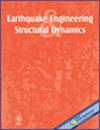A novel probabilistic Monte Carlo-based framework to conduct regional seismic risk assessments using simplified continuous models is proposed. The hazard at rock outcrop is defined by response spectral ordinates, which are simulated to account for spatial correlation and correlation across different periods simultaneously. For sites on firm and soft soils, a simplified site response analysis using a one-dimensional continuous non-uniform shear beam model is used to transform the hazard at rock outcrops to the hazard at all sites of interest. Uncertainty in the soil properties at each site is explicitly considered. Response spectra at each site are computed at the principal orientations of each building using recently proposed directionality models that permit the estimation of the seismic hazard at specific orientations. A one-dimensional continuous coupled shear-flexural beam model is used to simulate building dynamic properties accounting for modeling uncertainty and to obtain building responses for each building. The parameters of each model only require information on the building height and the lateral resisting system. All relevant uncertainties associated with each module of the framework are explicitly incorporated and propagated. Finally, a case study of tall buildings in San Francisco subjected to a magnitude 7.0 earthquake on the Hayward Fault is presented to illustrate how the framework can be implemented.


